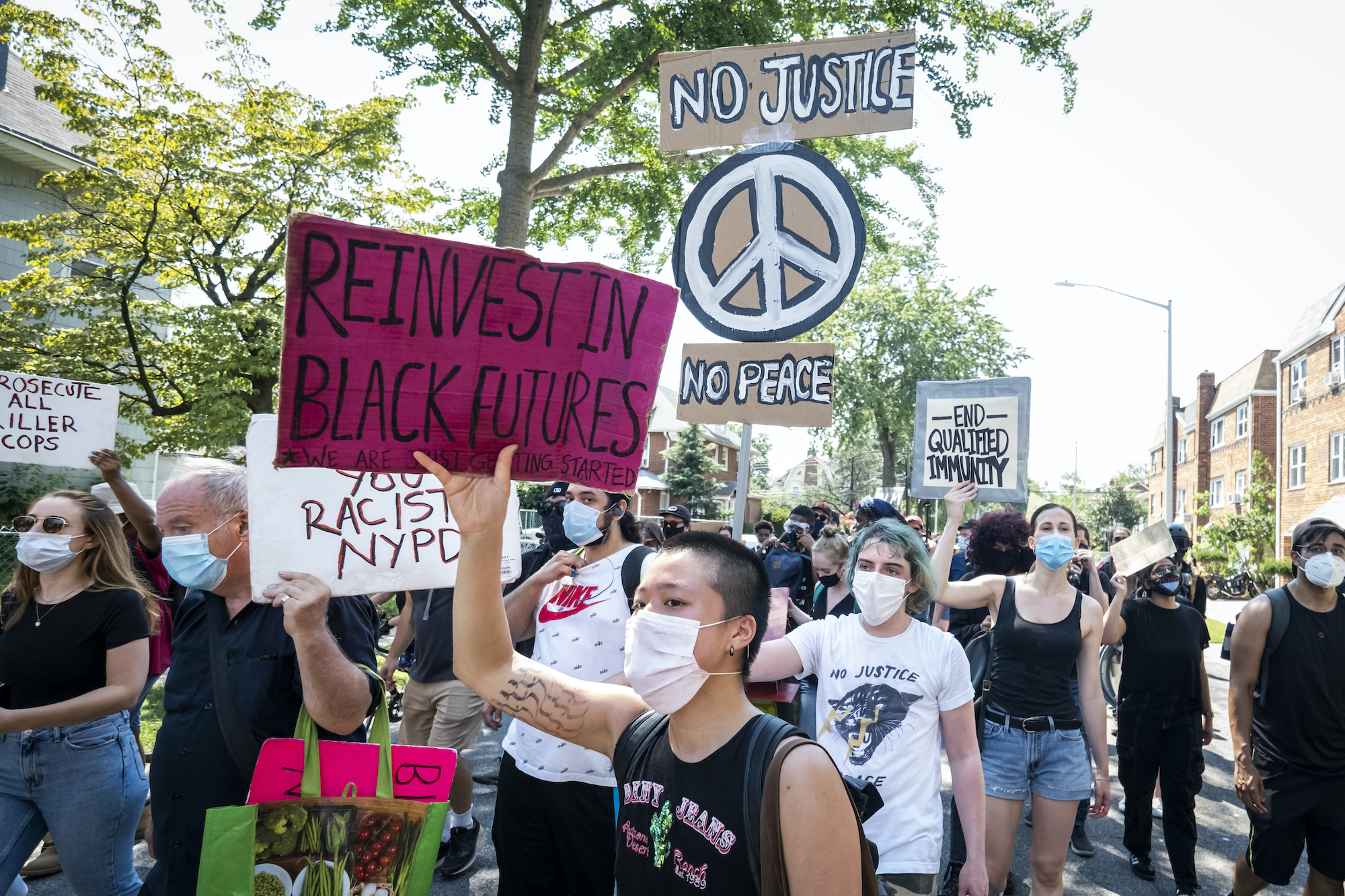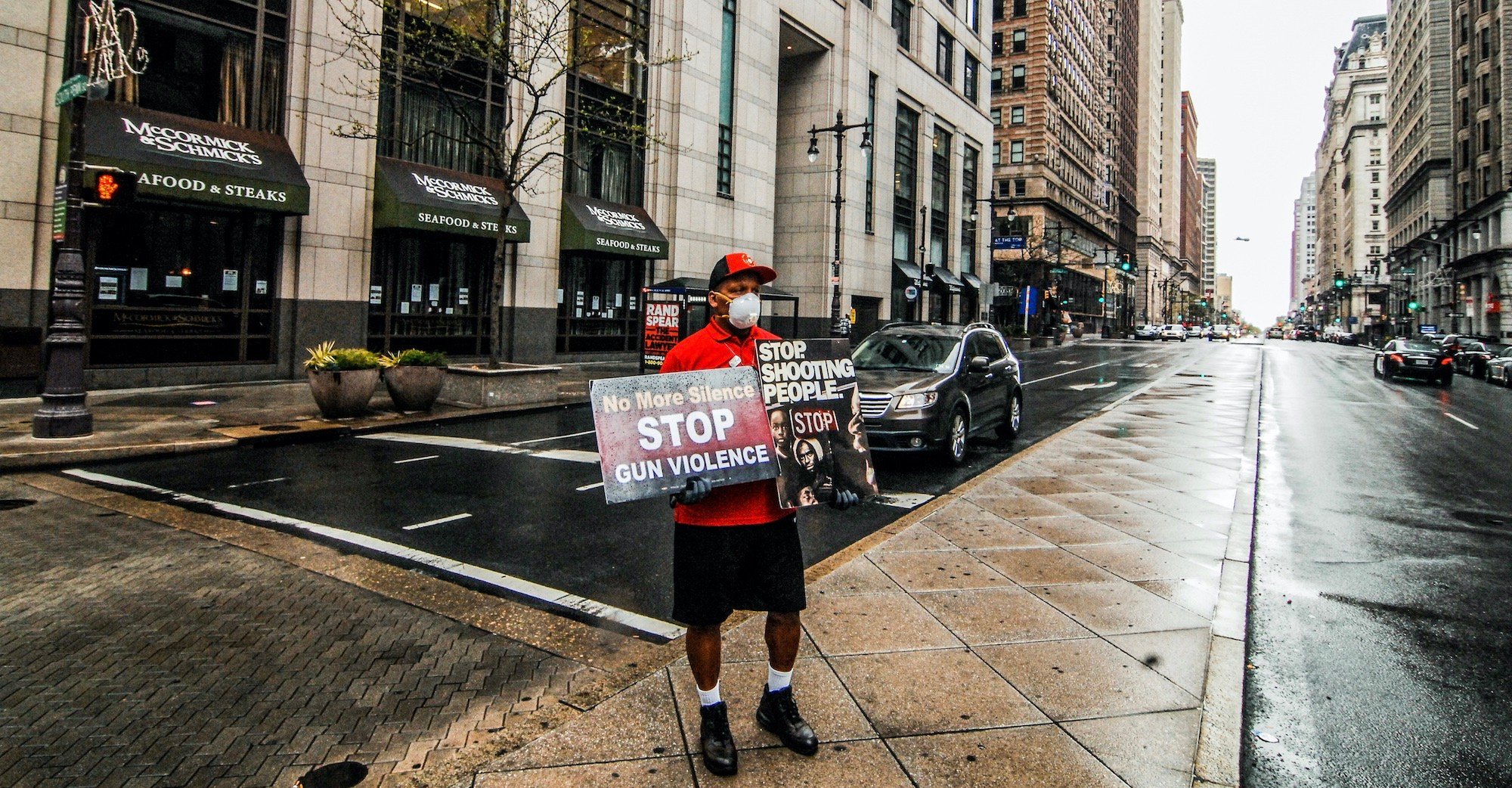As we move into the fall of 2020, long-standing racial injustices have sparked a once-in-a-generation protest movement. Cities are at the forefront and must find ways to address the demands of those who have been silenced for too long.
Unfortunately, local governments are already announcing budget cuts in response to massive deficits brought on by the coronavirus pandemic, including to programs with a proven track record of reducing the day-to-day gun violence that threatens the safety and wellbeing of Black and Brown communities. Rather than cut programs that save lives, we should listen to the demands from protesters who are calling for diverting funds from law enforcement to community resources that support safe and equitable communities in the first place.
Over recent years, we’ve learned a lot about what works to prevent violence. In January, Milwaukee reported that it has had consistent declines in homicide rates since 2015, and in 2019 had fewer than 100 homicides for the second year in a row. Philadelphia logged a 55 percent reduction in group or gang-member-involved murders from 2011 to 2015. In 2019, West Palm Beach, Florida, saw homicides decline by 29 percent.
It’s true that many cities — including Milwaukee and Philadelphia — have seen spikes in gun violence recently as the COVID-19 pandemic has left millions of people unemployed and struggling to keep their housing and put food on the table, and creating an unprecedented level of stress. And this stress has been compounded by the ongoing trauma of police violence that has taken the lives of Breonna Taylor, Tony McDade, and George Floyd as well as the confrontational police response to nationwide protests for Black Lives Matter. Tactics like the ones we’re seeing federal agents carry out in Portland, Oregon, don’t make communities safer — they exacerbate the risk of violence.
But that is even more reason to double down on the approach that we know works over the long term: Developing comprehensive community safety plans in partnership with residents, nonprofit organizations, and city agencies; and employing what’s known as a public health approach to preventing gun violence. In fact, these are the kinds of strategies that are being called for across the country.
A public health approach:
- Acknowledges racism and other forms of discrimination. Crucially important to this approach is an understanding that the current situation — in which neighborhoods of color face higher levels of violence, fewer opportunities, and deteriorated community conditions — didn’t happen by chance. These conditions were created by decades of policies and practices that intentionally marginalized people of color and poor people into neighborhoods of concentrated disadvantage.
- Follows the data. Looking at the specific profile of violence in a community — who is most affected, what’s contributing to violence, and what’s helping to create safety — enables violence prevention advocates to focus on the interventions that will have the greatest benefit.
- Examines community conditions. Our surroundings shape our experiences and behaviors, so successful prevention plans cultivate safety in streets, parks, jobs, schools, and elsewhere.
- Is designed to be collaborative. The process of developing a community safety plan brings together community members with people who represent healthcare, schools, parks, housing, law enforcement, social services, foundations, nonprofits, and others. Everyone comes to the table as equals.
- Puts community members in the lead. The people who are most impacted by violence have some of the best ideas about how to prevent it. They’re involved in setting priorities for what should be done to prevent violence and implementing the work.
- Provides a space for residents to process their trauma. Trauma is a serious ailment in communities with high levels of violence. Healing as a community and cultivating strengths is essential to successful violence prevention efforts.
In Milwaukee, city leaders used these guidelines to create the Blueprint for Peace. In New Orleans, it was called NOLA for Life. In Louisville, Kentucky, the Blueprint for Safe and Healthy Neighborhoods. These comprehensive plans include a range of strategies to interrupt, prevent, and heal from violence, including violence interrupters who de-escalate conflicts, increasing employment opportunities, after-school and summer programs, revitalizing neighborhoods, creating parks and youth centers, reducing bias and discrimination within public systems, and supporting culturally rooted healing from trauma.
When violence increases, it’s sometimes because a city has abandoned or not fully implemented the approach we’ve just described. In some cases, like Philadelphia, city leadership changed, and new leaders wanted to craft their own plan. In other cases, policing and jails won out against violence prevention strategies in the competition for resources in cities with strained budgets.
Instead of cutting what works to prevent violence, we need to shift resources that cities spend on jails, detention centers, and police departments toward comprehensive efforts to prevent violence before it happens. The truth is, it costs less to prevent violence than to respond to it after the fact.
Think about the costs involved in a shooting: police response, EMT transport, trauma care and other medical costs, police investigations, and district attorney and public defender costs, among others. Moreover, what cost can we assign to a life that was needlessly lost? Until we reduce the homicides in our communities to zero, we should do whatever it takes to save peoples’ lives.
This is what the Liberate MKE coalition, led by the African-American Roundtable in Milwaukee, advocated for prior to the pandemic, successfully steering $900 million from the Police Department budget to youth employment, affordable quality housing, and violence prevention efforts that don’t involve law enforcement — an effort that protesters in other cities are attempting to replicate, both to reduce law enforcement’s reach and to preserve funding for vital community services in a time of steep budget cuts. Under pressure from activists, policymakers in cities like San Francisco, Los Angeles, and New York have agreed to divert some funding from police to community services.
We can’t afford to abandon a public health approach to preventing gun violence. Instead, we need to expand this approach to every city in the nation. This unprecedented moment with its challenges and opportunities — provides an opening for cities to divest from broken systems that are harming Black and Brown communities and invest in what really works to create community safety.

